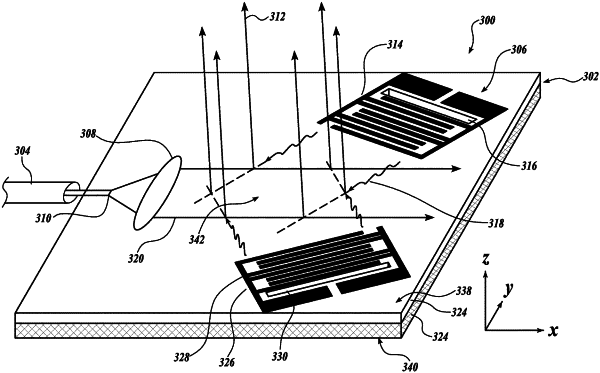| CPC G02F 1/335 (2013.01) [G01S 7/4817 (2013.01); G01S 17/02 (2013.01); G01S 17/42 (2013.01); G02B 26/0858 (2013.01); H01S 3/30 (2013.01)] | 20 Claims |

|
1. An acousto-optic device comprising:
a first acousto-optic layer having a substantially planar shape defining an x-y plane, the first acousto-optic layer functioning as an optical waveguide to optical waves propagating in the x-y plane, the first acousto-optic layer functioning as an acoustic waveguide to acoustic waves propagating in the x-y plane, the first acousto-optic layer having an asymmetry about the x-y plane, the first acousto-optic layer having a front face and a back face both oriented within the x-y plane, wherein the first acousto-optic layer comprises at least two stacked layers comprising a first layer of a first acousto-optic material and a second layer of a second acousto-optic material that is different than the first acousto-optic material;
a light source optically coupled to the first acousto-optic layer and configured to deliver light into the first acousto-optic layer propagating in the x-y plane; and
a first acoustic source acoustically coupled to the first acousto-optic layer and configured to deliver a first acoustic energy into the first acousto-optic layer propagating in the x-y plane, the first acoustic source configured to adjust a wavelength of the first acoustic energy,
the light source and the first acoustic source are positioned to provide an intersection between the light and the first acoustic energy,
the light at least partially scattering from the intersection out of the x-y plane, and
the light emerging from the front face in an amount that is at least 1% greater than the amount emerging from the back face due to the asymmetry of the first acousto-optic layer.
|